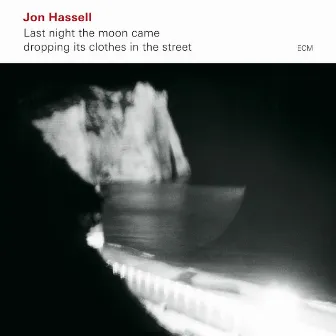Performance
Monthly Listeners
Current
Followers
Current
Streams
Current
Tracks
Current
Popularity
Current
Listeners 78,377
Top Releases
View AllBiography
Trumpeter Jon Hassell was the originator and unrivalled master of the musical aesthetic he dubbed Fourth World -- in his own words, "a unified primitive/futuristic sound combining features of world ethnic styles with advanced electronic techniques." Born March 22, 1937 in Memphis, TN, he attended Rochester, NY's Eastman School of Music and Washington, DC's Catholic University before studying in Europe under the legendary Karlheinz Stockhausen. After subsequent collaborations with minimalist pioneers La Monte Young and Terry Riley, Hassell mounted a number of solo pieces known collectively as the Landmusic Series; the most famous of these so-called "sound monuments" was 1969's Solid State, an electronic project which evoked the gradual erosion of sand dune formations via a tuned mass of vibrations. Beginning in 1972, Hassell studied classical Indian music under the tutelage of Pandit Pran Nath, modifying Nath's vocal techniques to the trumpet to develop the Fourth World concept, which he introduced with 1978's Vernal Equinox. The jazz-inspired Earthquake Island appeared a year later, and in 1980 Hassell issued Possible Musics/Fourth World Vol. 1, a collaboration with Brian Eno. (A sequel, Dream Theory in Malaya/Fourth World Vol. 2, was quick in forthcoming.) Through Eno, he also began working with a series of experimental pop acts, appearing on records by Talking Heads, David Sylvian and Peter Gabriel; in 1982, Hassell additionally scored Magazzini Criminali's Venice production of Sulla Strada, earning an Ubu award for Best Music for a Theatrical Work. Following 1983's Aka-Dabari-Java/Magic Realism (co-produced by Daniel Lanois), Hassell did not resurface on record until 1986's Power Spot; in the interim, he composed Pano de Costa, a string quartet piece recorded by the Kronos Quartet for their White Man Sleeps LP. The Surgeon of the Nightsky Restores Dead Things by the Power of Sound followed in 1987, and that same year Hassell collaborated with the Burkina Faso percussion ensemble Farafina, a union which spawned 1989's Flash of the Spirit. The hip hop-inspired City: Works of Fiction appeared in 1990, and four years later he launched Dressing for Pleasure; subsequent projects include Lurch, an experimental dance piece choreographed by Gideon Obarzanek, and 1999's Fascinoma, on which Hassell collaborated with Ry Cooder and Jacky Terrasson. Hollow Bamboo was issued a year later.













